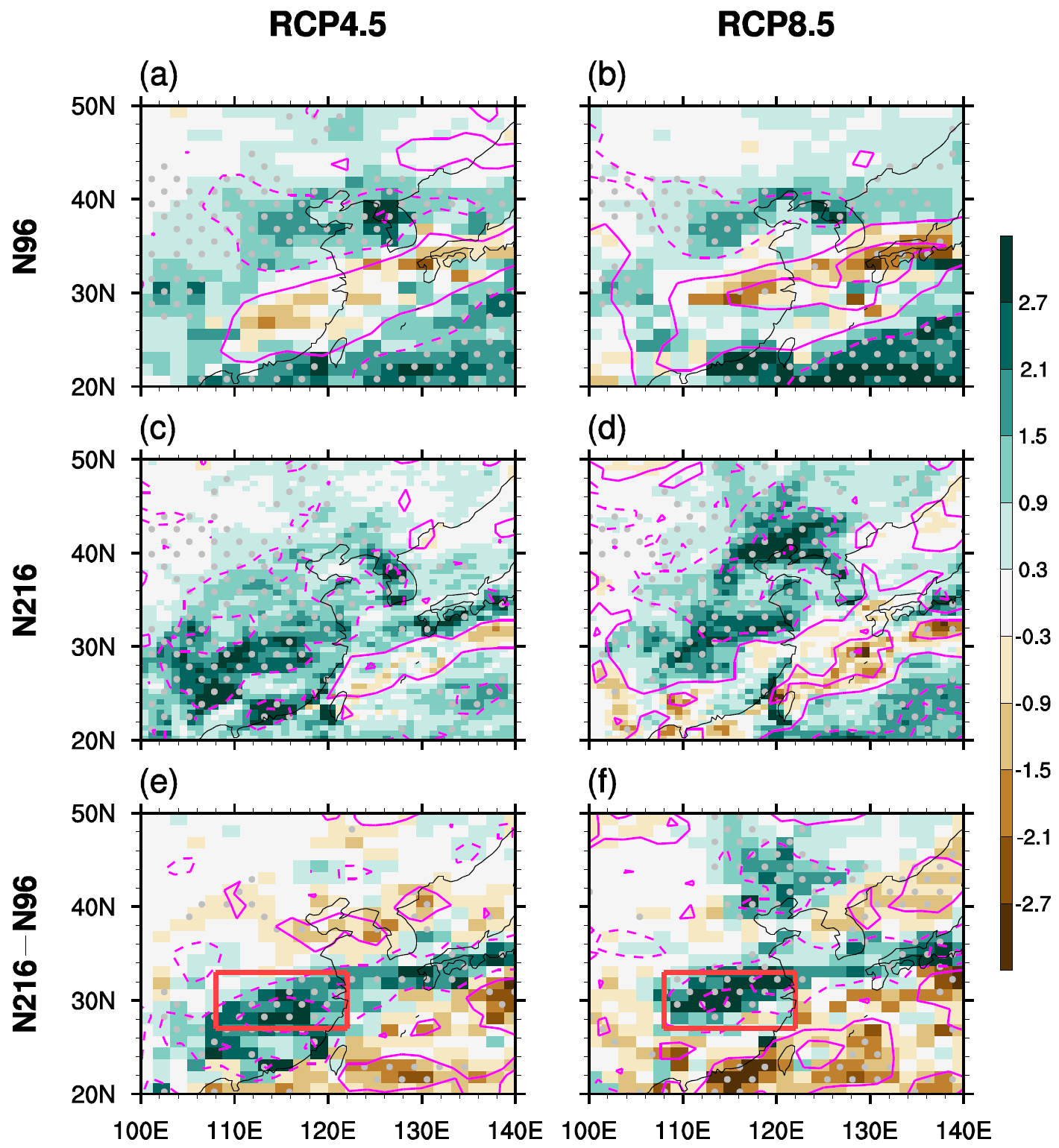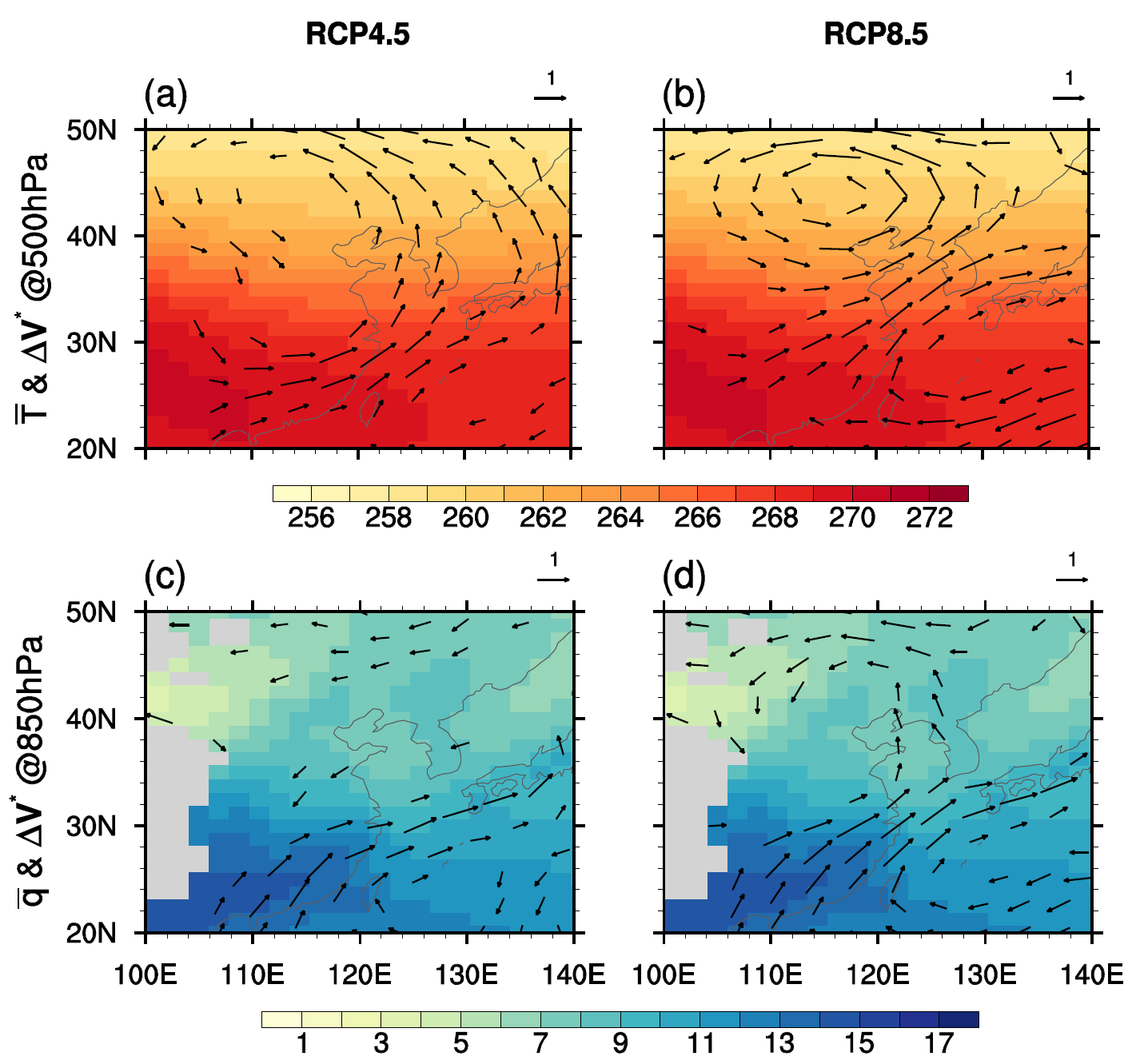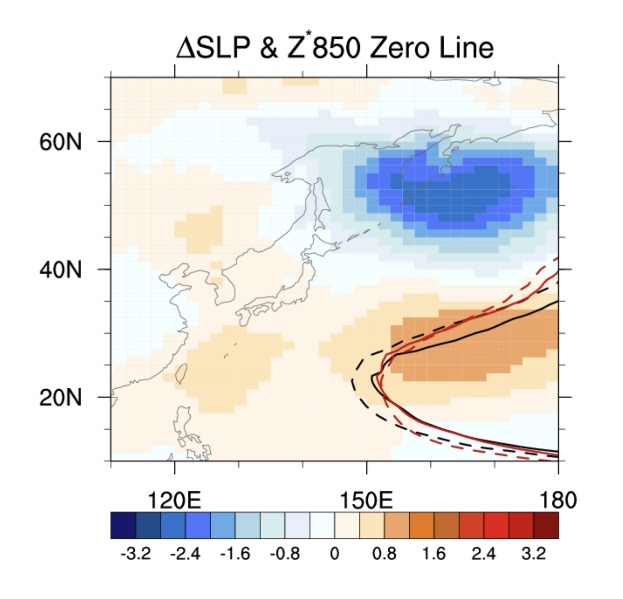State Key Laboratory of Numerical Modeling for Atmospheric Sciences and
Geophysical Fluid Dynamics (LASG)
Institute of Atmospheric Physics, Chinese Academy of Sciences

Vol. 6/No.6 July 2018
[Model development, algorithm, and evaluation] Potential underestimation of future mei-yu rainfall with coarse-resolution
Highlights:
The mei-yu rainfall is projected to increase in a high resolution (~60km) of HadGEM3-GC2 whereas to decrease in a low-resolution version (~130km), consistent with results across CMIP5 ensemble.
Based on moist static energy and moisture budget diagnostics, enhanced energy advection and moisture convergence by stationary eddies in the high-resolution model play an important role.
The western North subtropical high retreating eastwards too much in the low resolution in warmer climate leads to the reduction of moisture and energy transport and consequent underestimation of mei-yu.
Climate models are an indispensable tool for future climate projection including the mei-yu front rainfall. However, resolutions of coupled climate models participated in phase 5 of the Coupled Model Intercomparison Project (CMIP5) are still too low to resolve some regional rainfall systems, for instance, the mei-yu rain belt along the Yangtze River valley, which impairs the reliability of their projected results. Enhanced moisture in future warmer climate is definitely in favor of rainfall increase, while the spread in circulation change contributes most of the uncertainty in regional rainfall projection, in which the role of model resolution may be not negligible.
Recently, Dr. Chen Xiaolong and Prof. Zhou Tianjun from Institute of Atmospheric Physics, Chinese Academy of Sciences, cooperating with Peili Wu and Malcolm Roberts from Hadley Centre, Met Office, investigated the effect of model resolution on the mei-yu rainfall projection using the Hadley Centre’s latest climate model, HadGEM3-GC2. The high-resolution HadGEM3-GC2 (N216, ~60km) projects large increases of summer rainfall under two representative concentration pathway scenarios (RCP8.5 and RCP4.5) whereas the low-resolution (N96, ~130km) shows a decrease (Figure 1). A larger increase of projected mei-yu rainfall in higher-resolution models is also observed across the CMIP5 ensemble. Based on moist static energy and moisture budget analysis, deficient energy moist static energy advection and moisture convergence by stationary eddies (mainly in the meridional direction) in N96 is attributed to the projected weaker upward motion and less mei-yu rainfall (Figure 2).
A large-scale manifestation of the anomalous stationary eddies is the contrasting response to the same warming scenario by the western North Pacific subtropical high (WNPSH), which is almost unchanged in N216 but retreats evidently eastward in N96 (Figure 3). Interactions between high-latitude wave activity and low-latitude convection are dynamical reasons for the distinct responses of WNPSH in high and low-resolution HadGEM3-GC2. With the unchanged circulation in N216, more moisture in warmer climate will naturally increase the projected Mei-yu rainfall, whereas eastward retreat too much in N96 impedes moist static energy and moisture being transported into the Mei-yu region.
This study indicates that increases in model resolution to resolve parameterized processes and detailed orographic features will hopefully reduce the spread in future climate projections.
Figure caption:

Figure 1. Projected rainfall (shading; mm day–1) and vertical p velocity (contours; 10–3 Pa s–1) changes under the (a), (c), (e) RCP4.5 and (b), (d), (f) RCP8.5 scenarios in HadGEM3-GC2 at (a), (b) N96 and (c), (d) N216 resolutions and (e), (f) the differences between N216 and N96 resolutions. Contours are drawn for ±35, ±21, and ±7×10–3 Pa s–1 (dashed contours are negative values). Dotted areas exceed the 5% significance level of the student’s t test. Red box in (e), (f) denotes the mei-yu region.

Figure 2. Advective effects of differences between N216 and N96 in stationary eddy at typical levels under (a, c) RCP4.5 and (b, d) RCP8.5 scenarios. (a, b) Climatological temperature during 1976–2005 (shadings; K) and anomalous stationary eddy (vectors; m s–1) at 500 hPa during 2070–2099. (c, d) Climatological specific humidity during 1976–2005 (shadings; g kg–1) and anomalous stationary eddy (vectors; m s–1) at 850 hPa during 2070–2099. Winds less than 0.5 m s–1 are omitted. Gray shading denotes orography.

Figure 3. Differences between N216 and N96 resolutions in projected SLP (shading; hPa) changes under RCP8.5 scenario, and zero isolines of geopotential height eddy at 850 hPa (m). Solid (dashed) lines denote N216 (N96), and black (red) lines denote historical (RCP8.5) simulation.
Citation:
Chen, X., P. Wu, M.J. Roberts, and T. Zhou, 0: Potential underestimation of future Mei-yu rainfall with coarse resolution climate models. J. Climate, https://doi.org/10.1175/JCLI-D-17-0741.1
E-mail: lasg_newsletter@lasg.iap.ac.cn
Editors: Chuanyi Wang (wangcy@lasg.iap.ac.cn), Kangjun Chen(ckj@lasg.iap.ac.cn)